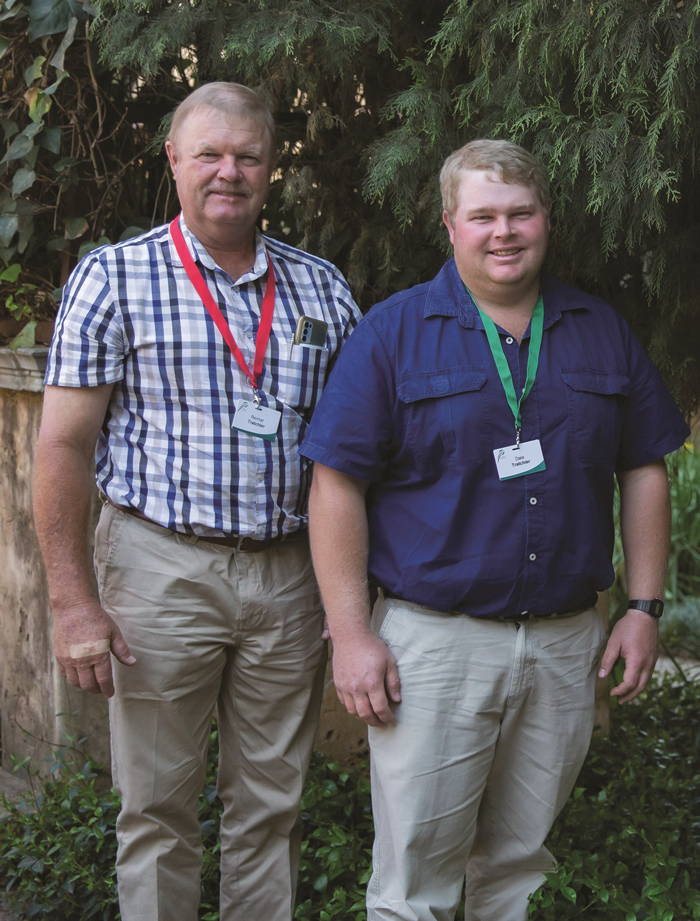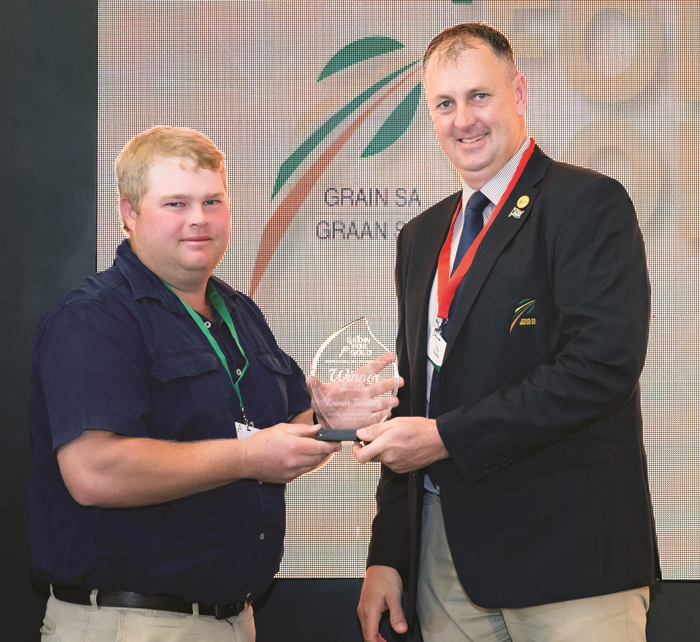For the past 40 years, Reimar Tratschler has farmed on the farm Rooidraai near Winterton in KwaZulu-Natal. Six years ago, his son Dale joined him on the farm. Reimar emerged as the winner in the category for maize production under irrigation in the Grow for Gold National Yield Competition with a yield of 22,7 t/ha.
They plant maize, soybeans, wheat and potatoes and have a commercial herd of Simbra cattle as well as a feedlot. The crops are produced following a rotational system where they plant 50% maize, 45% soybeans or wheat and 5% potatoes. The wheat is planted after the soybeans and they utilise the maize for the feedlot. The livestock also graze on the maize stover for three months of the year. The maize stover consists of the leaves, stalks and cobs of the maize plants left in a field after harvest and according to Reimar, by grazing the stover, they are basically increasing the benefits and profitability of the maize in the total production cycle.
Reimar entered the competition for the first time this year and on the block entered for Grow for Gold, the Pannar hybrid PAN 3R-724BR was planted. ‘I plant this hybrid because it is suited to irrigation conditions and shows good disease tolerance, has excellent standability and produces a nice uniform maize cob. We have planted this hybrid for the past three years.’
According to Reimar, they did nothing different from the normal practices they have in place for the rest of the crop production on the farm. ‘The management and inputs were all the same,’ he explained.


He planted this particular block on 5 November 2021 (with a Rovic Leers planter on a field where wheat was planted previously) and harvested it on 10 June 2022. His input costs for this section were R725,85/ton and if he calculates the yield according to available moisture, he obtained 29,3 kg/mm water.
They practise strip-tilling, disturbing only the portion of the soil where the seed and/or fertiliser will be placed, whilst keeping the residue between the rows undisturbed. Expanding on the fertiliser programme, he explains that he applied 150 kg ammonia before planting with a strip-till machine. During planting he applied a mix of 350 kg NPK to a 2:2:1 (34%) ratio, plus Zn (zinc) + 4% S (potassium sulphate). After planting he applied a top dressing mix of 300 kg NPK (41%) to a ratio of 3:0:1 plus 6% S (potassium sulphate).
Because all the summer crops are Roundup Ready (glyphosate-tolerant) crops, it makes weed management on the farm much easier. The hybrid he planted also contains Bt technology and provides protection against the main Lepidoptera species. They scout the fields on a regular basis for other insects and will control these if and when necessary. ‘We have a Farmers Agri Care representative that sees to our disease and insect management and we rely on him to give us the best advice regarding crop health.’
Reimar is an advocate for precision agriculture and says this is an integral part of his farming operation. His advice to other producers is to ensure that they build up their soil profile and maintain soil health. ‘Healthy soils form the basis of sustainable agricultural practices,’ he pointed out. He added that they make use of a company called Sion Agri that does their soil grid sampling and according to the results, provides recommendations for fertilisation for all the crops. ‘We follow their programme strictly.’
Although the Tratschlers produce 90% of their crop under irrigation, they had sufficient rain during the summer and there was no need to irrigate. Load shedding, thus, also did not present a problem during the season. ‘Our biggest challenge was to reap the crop because the lands were still so wet.’
According to Reimar they believe in planting trials. ‘We plant maize trials for Pannar and this enables us to see how hybrids will do on our farm under our conditions. It also gives us an idea of what new products are in the pipeline.’





























